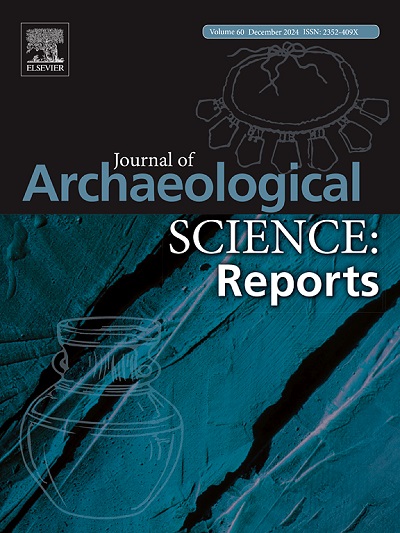旧石器时代狩猎的严重性
IF 1.5
2区 历史学
0 ARCHAEOLOGY
引用次数: 0
摘要
从旧石器时代中期开始,地形起伏可能在石器时代的狩猎活动中发挥了重要作用。溪谷和悬崖等自然地貌很可能是阻止或阻碍动物移动的陷阱。然而,地形上海拔高度和坡度的变化意味着猎人也可以利用地形从高处进行狩猎。在这里,我们通过考古实验探索了高处如何通过重力与射弹武器相互作用,从而影响导弹的功能效果。我们评估了两种旧石器时代射弹武器系统--投掷标枪和长矛(atlatl)及飞镖--在地面以及三米、六米和九米的发射高度上的速度和动能。标枪的实验结果支持我们的预测。随着发射高度的增加,速度和冲击动能也在增加。然而,出乎意料的是,用扁铲推进的飞镖并不符合我们的预测,不仅没有随着发射高度的增加而提高飞镖的速度或动能,反而降低了这两个变量的值。这些结果表明,旧石器时代的人们在某些情况下使用阿特拉尔镖进行狩猎很可能要付出相应的机会成本,而这种机会成本是以前没有记载过的。我们的研究结果还对旧石器时代和后旧石器时代考古学解释的几个方面产生了影响。本文章由计算机程序翻译,如有差异,请以英文原文为准。
The gravity of Paleolithic hunting
Topographic relief potentially played an important role in Stone Age hunting from the Middle Paleolithic onwards. Natural physical features like arroyos and cliffs, among many others, likely served as traps to stop or hinder animal movement. Yet, the presence of elevation and slope variation on a landscape means that hunters also may have been able to use terrain to hunt from on high. Here, we explored via archaeological experiment how an elevated position would have interacted with projectile weaponry via the force of gravity to influence a missile’s functional efficacy. We assessed the velocity and kinetic impact energy of two Paleolithic projectile weapon systems, the thrown javelin and the atlatl (spearthrower) and dart, at ground level and then at three-, six-, and nine-meter launch heights. The experimental results of the javelin supported our predictions. Velocity and kinetic impact energy increased as launch height increased. Unexpectedly, however, atlatl-propelled darts did not conform to our predictions, not only failing to increase dart velocity or kinetic impact energy as launch height increased but also decreasing both variables’ values. These results suggest that Paleolithic hunting with an atlatl in certain contexts likely came with consequential, and previously undocumented, opportunity costs. Our results also have implications for several aspects of archaeological interpretation in Paleolithic and post-Paleolithic contexts.
求助全文
通过发布文献求助,成功后即可免费获取论文全文。
去求助
来源期刊

Journal of Archaeological Science-Reports
ARCHAEOLOGY-
CiteScore
3.10
自引率
12.50%
发文量
405
期刊介绍:
Journal of Archaeological Science: Reports is aimed at archaeologists and scientists engaged with the application of scientific techniques and methodologies to all areas of archaeology. The journal focuses on the results of the application of scientific methods to archaeological problems and debates. It will provide a forum for reviews and scientific debate of issues in scientific archaeology and their impact in the wider subject. Journal of Archaeological Science: Reports will publish papers of excellent archaeological science, with regional or wider interest. This will include case studies, reviews and short papers where an established scientific technique sheds light on archaeological questions and debates.
 求助内容:
求助内容: 应助结果提醒方式:
应助结果提醒方式:


